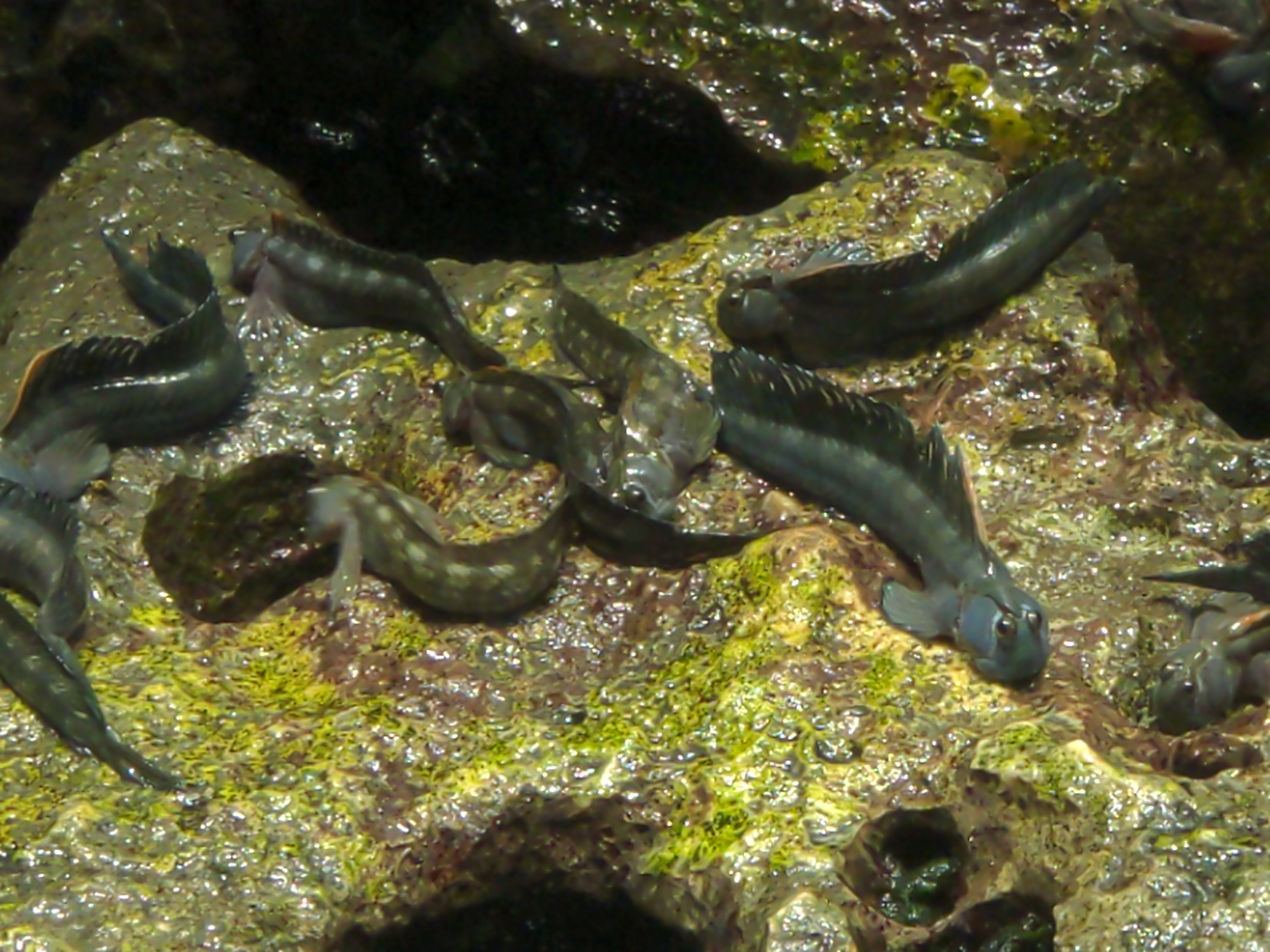The leaping blenny, scientific name Alticus saliens, often known as the leaping blenny, is a species of combtooth blenny, belongs to the family Blenniidae within the genus Alticus.In this article, I am going to give an overview of the leaping blenny fish profile.
Leaping Blenny Fish profile
There’s some uncertainty as to if it was first described by J.R. Forster in 1788 or B.G.E. Lacepède in 1800, though Fishbase at present accredits it to Forster. It was initially described as a member of the genus Blennius.
In accordance with a brand new paper printed within the journal Animal Behaviour, the Pacific leaping blenny (Alticus arnoldorum) – a singular fish that lives on land and may leap massive distances – makes use of camouflage to keep away from assaults by predators resembling birds, lizards, and crabs.
Leaping Blenny Distribution
It’s a tropical blenny recognized from the Pacific and Indian oceans, together with the Purple Sea, the Society Islands, the Ryukyu and Bonin Islands, Queensland, Australia; and the Mariana Islands.
Leaping blennies have been recorded at the most water depth of two meters. They inhabit holes in limestone deposits in intertidal zones and leap between holes when disturbed, incomes them their frequent title.
They’re very social at mid-tide, utilizing visible shows to warn off rivals and appeal to mates. Though they need to stay moist to breathe, the blennies are in a position to breathe air and keep away from submersion by tidewaters.
Leaping Blenny Habitat
The leaping blenny is a tropical blenny present in reefs in Samoa and the Marianas, Society, and Cook dinner Islands, within the western and southern Pacific Ocean.
The blennies are famous for leaping from gap to gap within the limestone rocks they inhabit when disturbed; every one of the frequent names for the species is derived from this.
They’re able to dwell on land for a number of hours at a time and have been reported performing many actions, together with foraging and mating whereas out of the water.
Nevertheless, they’re solely in a position to survive on land throughout mid-tide; if they continue to be out of water when the tide lowers enough that they can’t be stored moist, they dry out and suffocate.
In a research carried out by Tonia Hsieh of Temple College, in Philadelphia, Pennsylvania, it was found that members of A. arnoldorum are in a position to thrive on land because of their means to twist their tails axially at 90 levels, to propel their our bodies.
Hsieh famous that the twisting of the tail was behaviourism distinctive to A. arnoldorum and species within the genus Andamia; the 2 genera had been subsequently thought-about terrestrial.
Food plan
Leaping blennies feed primarily off of algae. They’re oviparous and kind distinct pairs when mating. They’ll attain the most whole size of 10 centimeters (four inches).
Biology
Present in moist shaded pockets of pitted limestone within the spray zone above the waterline. Leaps from gap to gap when disturbed.
Feeds on filamentous algae. Eggs are demersal and adhesive and are hooked up to the substrate by way of a filamentous, adhesive pad or pedestal. Larvae are planktonic, usually present in shallow, coastal waters.
Leaping Blenny Fish Size
The leaping blenny is a four to 8-cm-long tropical fish present in reefs in Samoa and the Marianas, Society, and Cook dinner Islands, within the western and southern Pacific Ocean.
It stays on land all it’s grownup life, however, has to remain moist to have the ability to breathe by means of its gills and pores, and skin.
Other Recommended Articles
- Silver Carp Jumping – What Causes Carp to Jump?
- Red Lipped Batfish Diet, Features and Habitat
- Hairy Frogfish (Antennarius striatus) Description
- Giant Frogfish (Antennarius commerson) Facts
- Freshwater Frogfish Facts and Description
- Painted Frogfish (Antennarius pictus) Description
- Surprising Facts about Frogfish
- Clown Frogfish Facts and Description
- Interesting Frogfish Eating Techniques
- Goblin Shark Habitat – Overview and Range
- Goblin Shark Size – How Big is the Goblin Shark?
- How a Baby Goblin Shark is Grown Up
- Goblin Shark Diet – Do Goblin Sharks Eat Humans?
- Goblin Shark Jaw – Shape of a Goblin Shark Mouth
- Goblin Shark (Mitsukurina owstoni) Profile and Facts
- Boop Boop Fish – Why they are Named So?
- Garrick or Leerfish (Lichia amia) Description
- Salema Porgy or Dreamfish Facts and Description
- Sheepshead Bream (Archosargus rhomboidalis) Facts
- Striped Red Mullet (Mullus surmuletus) Fish Facts
Leaping Blenny Habits
Leaping blennies transfer rapidly over-complicated rocky surfaces utilizing a singular tail-twisting habit mixed with expanded pectoral and tail fins that allow them to cling to virtually any agency floor.
To succeed in a larger floor in a rush, they will additionally twist their bodies and flick their tails to leap many instances their very own physique size.
In fact, they could not dwell without the ocean, as a result of without the mild kiss of sea spray discovered on the rocks close to the waves, they might dry out, asphyxiate, and die.
Since they ditched their watery residence, they’ve additionally repurposed their pores and skin (a lot as many amphibians have finished) to function an exterior lung, absorbing oxygen instantly from the air.
They nonetheless use their gills, however, their dermal lung is a worthwhile complement. However simply as with our lungs, if they can not preserve their pores and skin and gills moist, it is sport over.
Regardless of its want for moisturizing, the fish has primarily forsaken the ocean and spends its whole life on land.
Most of that life is a humble one, spent scraping the algae — scrumptious slime! — from rocks and consuming it.
However each now and again, life will get extra thrilling for a time as each man and woman hoist a flashy pink dorsal fin as a prelude to candy, candy love, or maybe in the event that they’d similar to have some phrases with their neighbors.

